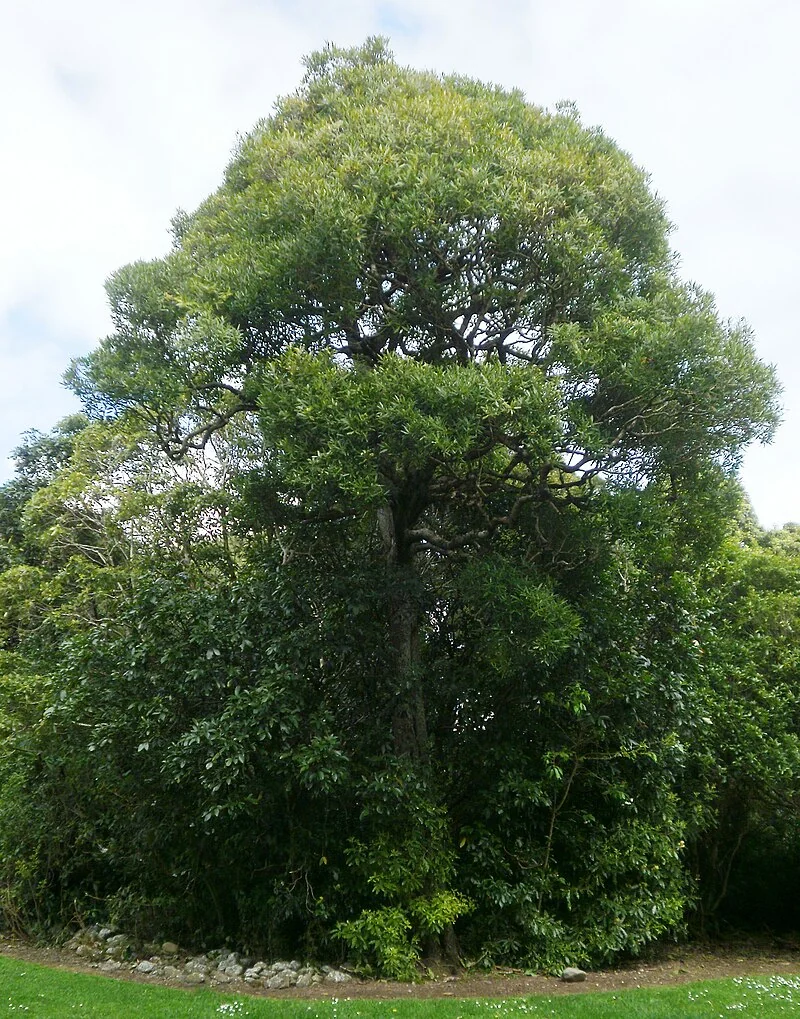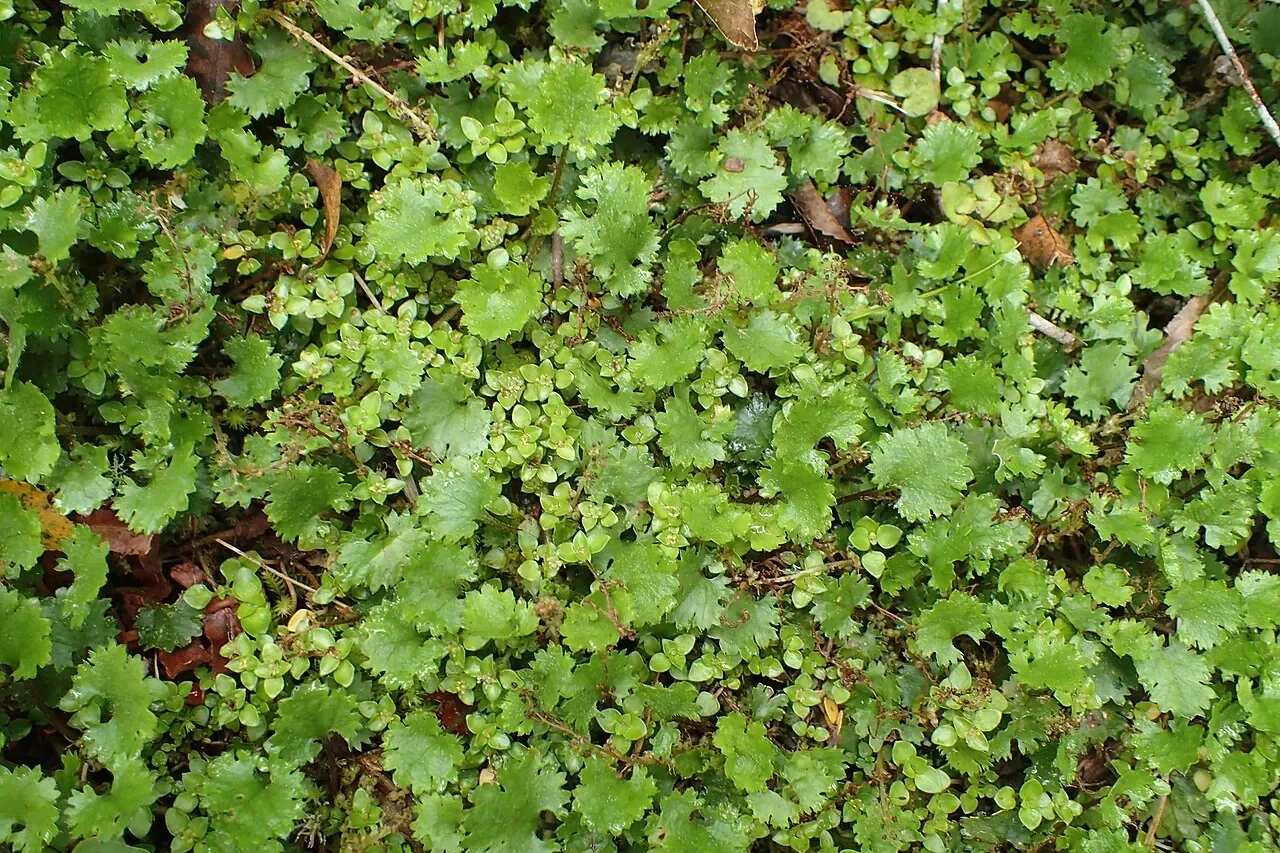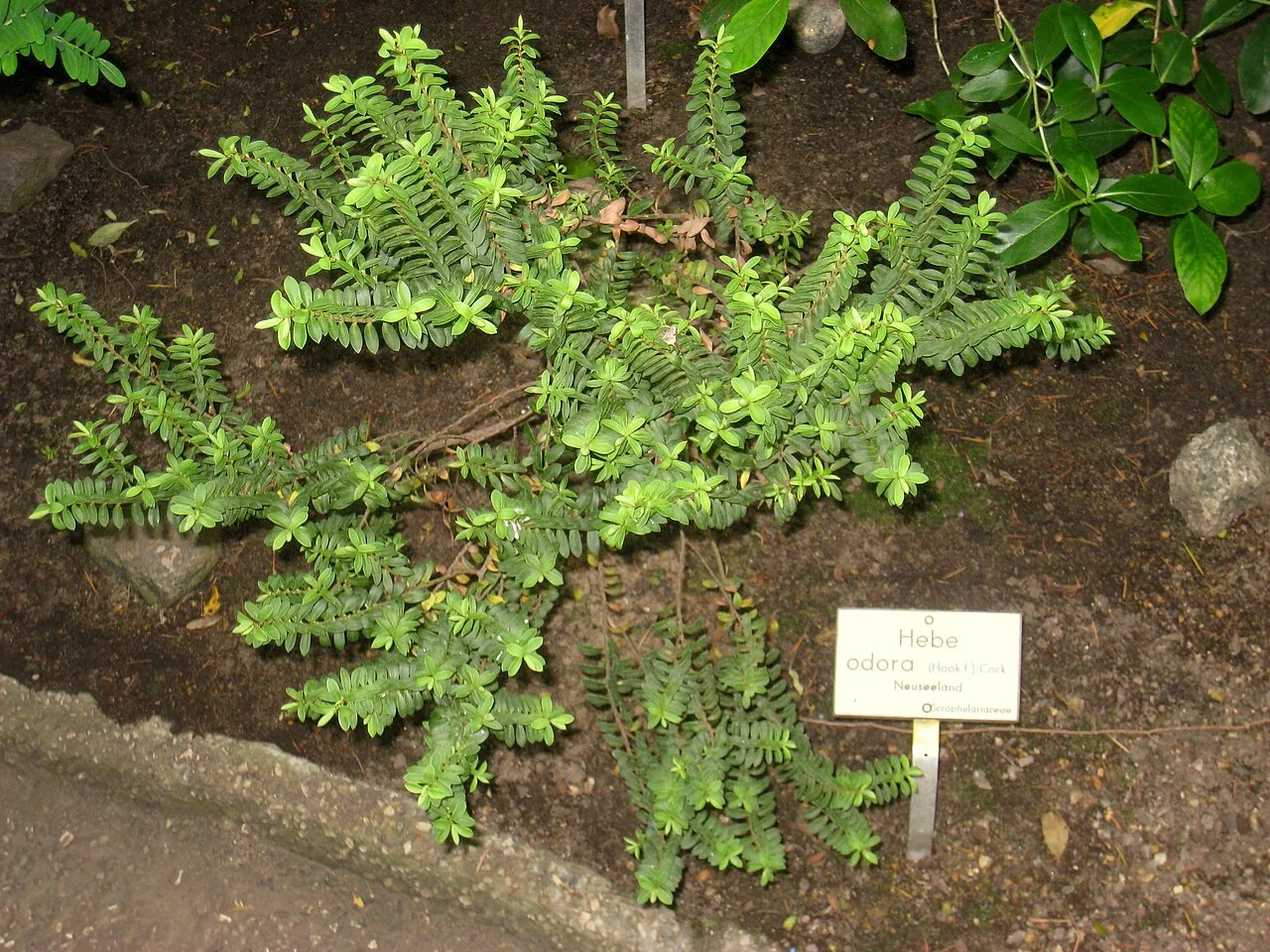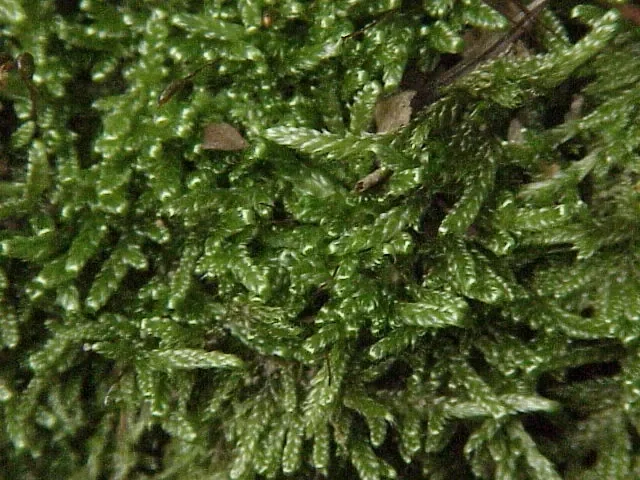
Bog Pine
Halocarpus bidwillii
This native plant, known as Bog Pine (scientific name: Halocarpus bidwillii), is a remarkable species endemic to New Zealand. It is characterized by its unique features, ecological role, and cultural significance. This comprehensive guide provides detailed information on its care, propagation, and importance within the New Zealand ecosystem. Understanding this plant contributes to the appreciation of our rich biodiversity and heritage. native trees

Plant Description
Halocarpus bidwillii, commonly known as bog pine or mountain pine, is a conifer species endemic to New Zealand. It typically grows as a spreading or erect shrub, occasionally reaching the size of a small tree up to 3.5 to 4.8 meters tall. Its bark is thin and reddish, later weathering to gray and flaking. This species exhibits dimorphic foliage: juvenile leaves are thick, leathery, and strap-like (5-10 mm long), while adult leaves are scale-like (1-2 mm long) and closely pressed to the branchlets. The plant is distinctive for its yellow-green color.
Quick Facts
| Scientific Name | Halocarpus bidwillii |
|---|---|
| Height | 15-20m |
| Spread | 3-5m |
| Water Needs | Moderate |
| Light | Full sun to part shade |
| Frost Tolerance | Moderate |
| Salt Tolerance | Moderate |
| Growth Rate | Medium |
| Lifespan | Long |
Climate Best Suited to
Bog Pine (Halocarpus bidwillii) is found throughout New Zealand's North, South, and Stewart Islands. It is one of New Zealand's most frost-resistant conifers, able to withstand temperatures below -7°C, and thrives in a variety of habitats from wetland margins to mountainous areas. In the North Island, it typically grows at elevations between 600 and 1,500 meters, but it can be found closer to sea level in the south, particularly on Stewart Island.
Regional Suitability
| City | Climate Suitability |
|---|---|
| Whangārei | Ideal |
| Auckland | Ideal |
| Hamilton | Ideal |
| Tauranga | Ideal |
| Rotorua | Ideal |
| Gisborne | Ideal |
| New Plymouth | Ideal |
| Napier | Ideal |
| Whanganui | Ideal |
| Palmerston North | Ideal |
| Wellington | Ideal |
| Nelson | Ideal |
| Christchurch | Ideal |
| Dunedin | Moderate |
| Invercargill | Moderate |
Plant Habitat
Bog pine (Halocarpus bidwillii) demonstrates remarkable habitat diversity throughout New Zealand, occurring from lowland to subalpine environments across both North and South Islands. The species thrives in wetland margins, bogs, and poorly draining heathland, but also adapts to dry, stony ground and tussock grassland.
From Cape Colville on the Coromandel Peninsula to Stewart Island, bog pine typically grows at 600-1,500m elevation in the north but comes closer to sea level in the south. This hardy conifer particularly favors leached, low-nutrient soils and demonstrates excellent tolerance for frost-prone environments.
Plant Conservation
Bog pine (Halocarpus bidwillii) currently has a conservation status of "Not Threatened" as of 2023, though it is noted as uncommon and declining in some parts of its North Island and South Island range. As an endemic New Zealand species, its conservation remains important for maintaining native conifer diversity.
Protected populations exist in reserves such as the Wilderness Scientific Reserve in Fiordland National Park, which protects New Zealand's best surviving remnant of bog pine habitat. Monitoring and habitat protection are essential to prevent further decline in vulnerable populations.
Growing Requirements
Soil Requirements
Bog Pine (Halocarpus bidwillii) prefers leached, low-nutrient, and poorly drained soils. It is highly adaptable and can be found in wetland margins, bogs, poorly draining heathland, frost-flats, river beds, and dry, stony ground, often in tussock grassland. This adaptability makes it suitable for challenging soil conditions.
- Tolerates a wide range of soil types from clay to sandy
- Prefers well-draining soils but can handle occasional waterlogging
- Thrives in moderately fertile soils but will grow in poor soils too
- Can tolerate slightly acidic to slightly alkaline pH
- Handles coastal conditions including salt spray
Light Requirements
White maire (Nestegis lanceolata) thrives in a variety of light conditions, from full sun to partial shade. Optimal growth and flowering are typically achieved in locations receiving ample sunlight throughout the day. However, it can also tolerate some shade, especially in hotter climates, where it benefits from protection during the most intense afternoon sun.
- Full sun for optimal growth and form
- Can tolerate partial shade but may develop a leggier form
- At least 6 hours of direct sunlight daily is ideal
- Northern or eastern exposures work well in garden settings
Water Requirements
Bog Pine (Halocarpus bidwillii) is adapted to a range of moisture conditions, from wet bogs to dry, stony ground. While it can tolerate poorly drained soils, consistent moisture is beneficial, especially during establishment. It is generally resilient to varying water levels, reflecting its diverse natural habitats.
- Moderate watering during establishment (first 1-2 years)
- Drought-tolerant once established
- Can handle periods of soil saturation
- Reduce watering in winter when growth slows
- Signs of overwatering include yellowing leaves and crown rot
Planting Guide
Bog pine (Halocarpus bidwillii) can be grown from seed or propagated from semi-hardwood and hardwood cuttings. The species requires well-drained but consistently moist soil and dislikes both drought conditions and excessive humidity.
Choose planting locations that provide good drainage while maintaining soil moisture, avoiding areas prone to waterlogging despite the species' bog habitat associations. The plant's tolerance for poor, nutrient-deficient soils makes it suitable for challenging growing conditions where other species might struggle.
Ecological Role
Bog pine (Halocarpus bidwillii) plays important ecological roles in New Zealand's montane and subalpine ecosystems. As a dioecious species, it produces distinctive waxy white arils that subtend the seeds, which are dispersed by frugivorous birds from February to June.
The species contributes to habitat diversity across elevation gradients and provides structure in specialized environments like bogs and frost-flats. Its ability to thrive in nutrient-poor conditions makes it a pioneer species in challenging montane environments, helping stabilize soils and create microhabitats for other native plants.
Uses & Significance
Garden Uses
Bog Pine (Halocarpus bidwillii) is a hardy and distinctive conifer suitable for native gardens, rockeries, and revegetation projects, particularly in challenging environments. Its unique foliage and frost resistance make it a valuable addition to alpine or wetland-themed plantings. It can be used as a specimen plant or in mixed plantings.
- Specimen tree for visual impact
- Suitable for native gardens and restoration projects
- Enhances native garden aesthetics and biodiversity
- Provides architectural accent with its unique structure
- Effective for erosion control on slopes and banks
Bog Pine (Halocarpus bidwillii) holds cultural significance as an endemic New Zealand conifer. While specific traditional Māori uses are not extensively detailed in the search results, conifers generally provided timber and other resources. Its hardiness and presence in diverse habitats would have made it a familiar plant in various Māori landscapes.
- Important for tools, weapons, and construction in traditional Māori culture
- Wood is one of New Zealand's hardest native timbers
- Served as a marker tree for trails, boundaries, and sacred sites
Ecological Value
Ecologically, Bog Pine (Halocarpus bidwillii) plays a crucial role in various New Zealand ecosystems, particularly in wetland and alpine environments. It provides habitat and shelter for various fauna and contributes to soil stabilization. Its ability to form extensive thickets by layering enhances its ecological resilience and contributes to the unique biodiversity of these habitats.
- Provides a vital food source for native birds, especially the kereru
- Offers habitat and nesting sites for various fauna
- Contributes to soil stabilization and nutrient cycling
- Forms natural shelter belts, protecting other species
Landscaping Uses
Bog pine (Halocarpus bidwillii) offers unique landscaping opportunities for specialized native gardens, particularly in montane or subalpine-style plantings. Its compact growth form (typically under 4.8m tall) and distinctive dimorphic foliage - scale-like leaves on adult plants and strap-like leaves on juveniles - create interesting textural contrasts.
The species is ideal for rock gardens, native conifer collections, or areas designed to mimic New Zealand's montane environments. Its tolerance for poor soils and challenging conditions makes it suitable for difficult sites where other plants might fail to establish.
Seasonal Care Calendar
Spring
In spring, Bog Pine (Halocarpus bidwillii) begins its active growth phase. New foliage emerges, and it\'s an ideal time for planting new specimens. Ensure adequate moisture and monitor for early signs of pests. Light fertilization can support vigorous growth.
- New growth begins with fresh foliage development
- Apply a balanced, slow-release fertilizer if desired
- Excellent time for planting new specimens or dividing offsets
- Monitor for new pest activity and address promptly
Summer
Summer is the peak growing season for Bog Pine (Halocarpus bidwillii). Consistent moisture is important, especially for young plants, to support vigorous growth. Established plants are generally resilient to summer conditions, but extreme drought may require supplemental watering.
- Flowering typically occurs in early to mid-summer (November-January)
- Water young trees regularly during extended dry periods
- Avoid heavy pruning during the active growing season
Autumn
During autumn, Bog Pine (Halocarpus bidwillii) prepares for the cooler months. It\'s a good time for planting and general garden cleanup, as well as collecting seeds for propagation. Ensure adequate moisture for newly planted specimens.
- Fruits or berries develop and ripen (December-February), attracting birds
- Natural leaf shedding occurs as part of its growth cycle
- Good time for planting new specimens to establish before winter
- Clean up fallen leaves if a tidy appearance is desired
Winter
Winter is generally a dormant period for Bog Pine (Halocarpus bidwillii). As a highly frost-resistant conifer, it requires minimal care, even in very cold regions. This is an opportune time for any necessary structural pruning to maintain shape and health.
- Generally dormant with minimal growth activity
- No special winter protection needed in most mild climates
- Suitable time for structural pruning if required
- Fallen leaves can be left as mulch or removed for tidiness
When to Prune and How Much
Bog Pine (Halocarpus bidwillii) generally requires minimal pruning to maintain its natural form and health. Pruning should focus on removing dead or damaged growth and shaping the plant as needed. Formative pruning when young can help establish a desired structure. Major pruning is best done in late winter to early spring before new growth begins.
- Remove dead, damaged, or diseased branches at any time of year
- Light formative pruning when young helps establish good structure
- To create a multi-trunked specimen, cut the main stem to encourage branching
- Fallen leaves can be removed for a tidier appearance, or left as natural mulch
- If necessary, lower branches can be removed to create clearance underneath
- Major pruning is best done in late winter to early spring before new growth
Always use clean, sharp tools for pruning to minimize the risk of disease and ensure clean cuts. The plant often responds well to pruning with vigorous new growth, contributing to a fuller, healthier appearance.
How to Grow Bog Pine (Mountain Pine)
From Seed
Halocarpus bidwillii produces small, hard seeds within its characteristic woody cones that mature over 18-24 months, requiring careful timing for optimal collection. Harvest seeds when the cones begin to open naturally, typically in late autumn to early winter, as fresh seed provides significantly better germination rates than stored material. The seeds are small and should be extracted carefully from the opened cones, removing any chaff or cone debris. Due to the species' adaptation to harsh montane environments, seeds require extended cold stratification to break dormancy - place cleaned seeds in slightly moist sand or peat moss and refrigerate at 1-4°C for 12-16 weeks, simulating the prolonged winter conditions of their natural habitat. Prepare a specialized seed-raising mix suited to conifer species, combining equal parts sterilized potting mix, coarse sand, and fine bark chips to ensure excellent drainage while maintaining adequate moisture retention. Sow seeds at a shallow depth of 5mm in individual small pots or cellular trays, as conifer seedlings develop sensitive taproot systems that dislike disturbance. Place containers in a cool, bright location with temperatures maintained between 12-18°C, avoiding excessive heat which can inhibit germination in this montane species. Maintain consistent moisture using gentle misting rather than heavy watering, ensuring the surface never completely dries out. Germination is characteristically slow and irregular, typically taking 6-20 weeks, with some seeds potentially remaining dormant for extended periods. Seedlings grow extremely slowly initially, often taking 2-3 years to reach transplantable size, requiring patience and consistent care throughout their juvenile development.
From Cuttings
Vegetative propagation through cuttings offers a reliable method for Halocarpus bidwillii, though success requires specific techniques adapted to this hardy conifer species. Take semi-hardwood cuttings during late summer to early autumn when the current year's growth has begun to firm but retains some flexibility. Select healthy shoots 8-12cm long from vigorous outer branches, choosing growth that shows the characteristic scale-like adult foliage rather than the juvenile strap-like leaves. The cuttings should be taken from well-lit portions of the plant where growth is most active, avoiding shaded interior branches which root less successfully. Remove lower foliage from the bottom third of the cutting, taking care not to damage the remaining scale leaves which are crucial for photosynthesis during the rooting period. Create a clean cut just below a node using sharp, sterilized secateurs, then lightly wound the base by making shallow scrapes with a knife to expose the cambium layer and encourage root formation. Apply rooting hormone containing IBA at 2000-3000ppm concentration, ensuring even coverage of the wounded area. Insert cuttings into a specialized propagation medium consisting of coarse sand, perlite, and fine bark in equal proportions, providing the excellent drainage essential for preventing rot in conifer cuttings. Maintain high humidity using a propagation tent while ensuring adequate air circulation to prevent fungal issues common in humid conditions. Keep temperatures cool at 15-20°C, as excessive heat can cause cutting failure in this montane species. The rooting process is typically slow, requiring 12-20 weeks for successful root development, with success rates varying seasonally and by cutting selection.
From Layering
Natural layering represents Halocarpus bidwillii's primary method of vegetative reproduction in the wild, where horizontal branches naturally root when in contact with moist soil, eventually forming extensive thickets. This characteristic can be utilized for propagation by selecting low-growing branches that can be bent to ground level without breaking. Choose flexible younger branches from the current or previous year's growth, ensuring they can reach the soil surface when gently bent downward. Prepare the layering site by cultivating the soil to improve drainage and adding organic matter such as leaf mold or well-rotted compost. Create a shallow trench 3-5cm deep where the branch will make contact with the soil. Wound the underside of the branch at the point of soil contact by carefully scraping away bark to expose the cambium layer, which stimulates root formation at the wound site. Secure the wounded section in the prepared trench using a wire peg, rock, or wooden stake, ensuring firm contact between the wounded branch and moist soil. Cover with soil and apply a light mulch layer to maintain consistent moisture levels. Root development typically occurs over 12-18 months, particularly during the warmer growing seasons. Once a strong root system has developed, carefully sever the new plant from the parent using clean secateurs and transplant to its permanent location, ideally during cooler months to reduce transplant shock.
Pests & Diseases
Bog pine (Halocarpus bidwillii) is generally a hardy native conifer with few serious pest and disease issues when grown in appropriate conditions. Its natural adaptation to harsh montane environments has given it good resistance to many environmental stresses.
The main considerations for healthy growth involve maintaining appropriate soil moisture without waterlogging, and ensuring adequate drainage. Once established, the species' natural hardiness typically requires minimal intervention, though monitoring for any unusual stress symptoms during establishment is recommended.
Cultural Significance
Bog pine (Halocarpus bidwillii) represents an important component of New Zealand's native conifer heritage, with the species named after John Carne Bidwill, a notable 19th-century botanist and plant collector who contributed significantly to New Zealand botanical knowledge.
The species holds ecological and scientific value as a remnant of New Zealand's pre-human forest communities, particularly in specialized bog environments. Its presence in protected areas like Fiordland provides important insights into the country's botanical history and montane ecosystem evolution.
Bonus Tip
Despite its common name "Bog Pine," Halocarpus bidwillii is actually not a true pine at all, but belongs to the ancient podocarp family. This slow-growing conifer can live for hundreds of years and often develops fascinating gnarled, sculptural forms in exposed mountain locations. The plant's ability to thrive in waterlogged soils makes it unique among New Zealand conifers, earning it the "bog" designation.







